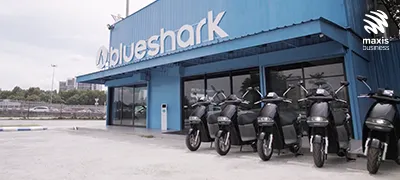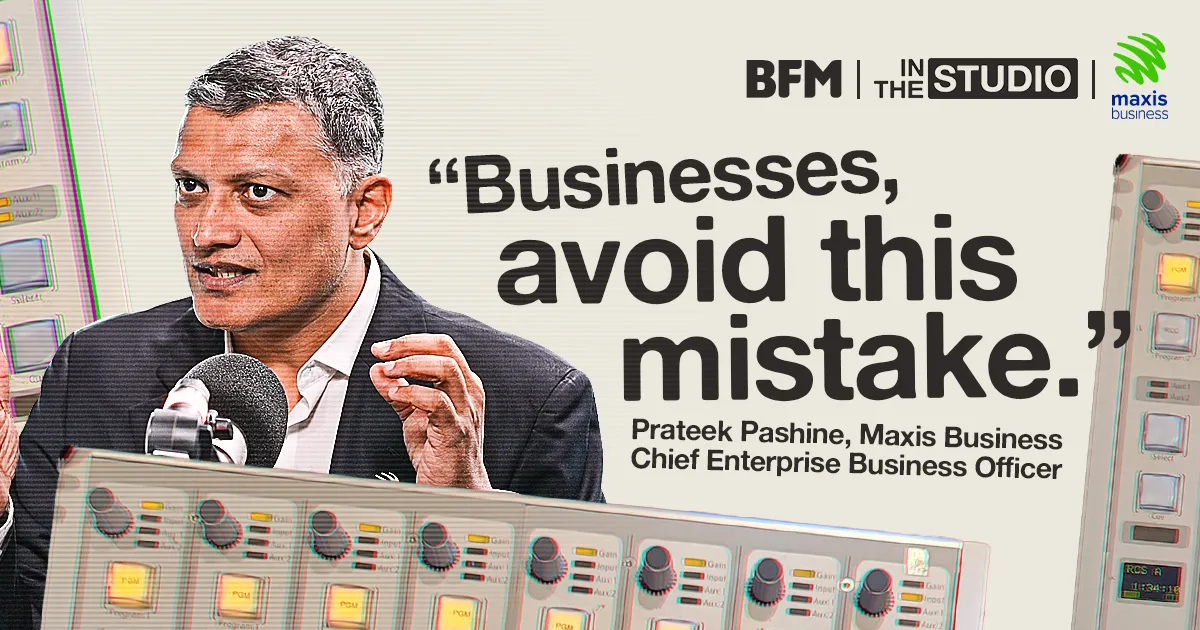Agritech: Pioneer Industry to Reap 5G Benefits
The year 2020 presented a slew of hurdles for most of those in the agriculture and farming industry. They faced the ultimate conundrum: On the one hand, they needed to continue producing fresh produce for the many households that had started cooking again because of the Movement Control Order (MCO). On the other hand, farmers saw their crops rot and die because they could not cross state lines to distribute their goods.
Agriculture is vital to Malaysia’s economy, contributing between 7% and 12% to the nation’s gross domestic product (GDP). In 2018, the industry contributed RM99.5 billion (7.3%) to the country’s GDP. But the outbreak of the pandemic has resulted in the sector reporting an estimated income loss of RM0.5 billion this year compared with last year.
Opportunity with tech adoption
Dr Ahmad Safuan Bujang, deputy director of the smart and precision farming programme under the engineering research centre of the Malaysian Agricultural Research and Development Institute (MARDI), says that conventional agriculture requires a lot of skill and understanding, not only of the elements involved, but also the actions needed to produce a good crop.
This type of skill can only be acquired through time, experience, and countless trial and error. However, when this skill and knowledge are coupled with smart farming solutions, future farmers will be able to save a lot of time, money and energy in their bid to optimise agricultural yield.
“Smart farming allows us to quantify the variables that exist on your land or farming operation, such as soil fertility, weather patterns, temperature, humidity, rainfall and wind speed,” says Ahmad Safuan.
“With these sensors in place, you will be able to digitally acquire all of this information and put it into a system to monitor and study. This is the lowest level of tech adoption and as you go up the tech ladder, you will be able to have a system that facilitates what you do on the field.
“And if you go further up the ladder, you could develop algorithms or models to help you predict the best options that you have based on the market data, weather data and historical data, helping you decide on things such as what are the best crops to plant and when to harvest.”
According to Ahmad Safuan, MARDI aims to modernise agricultural processes through the application of Industrial Revolution 4.0 (IR4.0) principles that will allow the processes to be flexible, customisable and robust. Internet of Things (IoT) sensors and actuators deployed in a smart agricultural system allow modern farmers to efficiently monitor plant growth and sustainably apply agricultural inputs such as fertilisers and pesticides.
Sensors and actuators will be ubiquitous features in modern farms, he says, and these smart solutions can leverage an already wide cellular network-based application that is cost-effective and reliable.
Recently, MARDI and Maxis collaborated to explore the possibility of utilising 5G-network capabilities in an agricultural setting. This initiative also serves as a springboard to more research and development in integrating 5G technology into agriculture.
Ahmad Safuan says that at MARDI Langkawi Agro Technology Park, a grape fertigation plot cultivated under a rain shelter was selected as one of the agricultural use cases for 5G adoption. Sensors were put in place to measure soil moisture, water pH and ambient temperature. The data was collected using Narrowband Internet of Things (NB-IoT) and deposited into a cloud server for data visualisation and analysis.
“NB-IoT is a future-proof network technology that enables devices to operate in a large area with increased power efficiency for off-the-power-grid use. This trait enables an optimised network of sensors in the agriculture industry. With the implementation of these smart farming technologies, modern farmers would be able to monitor and manage their crops remotely for better work efficiency,” he explains.
“So, what is happening at MARDI Langkawi is two-pronged. One is the digitalisation of the processes, and the other is the exploration of data connectivity through NB-IoT. We are utilising this technology to obtain data that we need from equipment and sensors, which can give us information on how well we are managing the crop growth using its energy-efficient operation and wide in-depth coverage capability.”
The end goal, says Ahmad Safuan, is to get farmers to use this system when 5G is in place, so that they can utilise the full potential of it. NB-IoT is one of the lowest hanging fruits that people can start adopting to ride the potential of 5G when it is rolled out. NB-IoT can also be used on the existing LTE infrastructure and is available today. The distinction between 4G and 5G lies in their capacity and bandwidth.
He adds that this is something that the agency intends to use in the market once the system is stable, the devices are fully developed and the 5G network is available for people to use. NB-IoT is suitable for this industry because of its low energy and bandwidth requirements, which means that farmers can utilise it in rural areas with minimal maintenance.
“Right now, there is a lot of talk about IR4.0 in manufacturing. So in agriculture, we’re working along the same lines and trying to establish the key features that are in line with these principles.
“We want to utilise all of the technologies that we have and apply it in agriculture, so that we can build an ecosystem that is controlled, sophisticated and efficient, among others. At the end of five years, we intend to have a platform that would enable people to deposit data, acquire data and utilise it.”
Connectivity, a basic necessity
The smart farming solutions currently being developed by Maxis and MARDI are especially essential for smallholder farmers, micro-enterprises and rural farmers. According to Langit Collective co-founder Melisa Lim, most agritech solutions come in big formats, are expensive and, sometimes, too advanced for immediate implementation on the fields.
“For example, we recently designed a low-cost, simple machine for people to use on their farms. It mechanises the stirring of organic soil enhancers. Prior to this, there were no solutions in the scale that we needed, as the machines were all oversized and cost at least 20 times more.
“In our work, we always need customised solutions as the situation on the ground varies from village to village, and even more so than that in an urban setting. Take, for example, logistics — [sometimes there is] limited or no digital connectivity and so on, so we always need to be creative, innovate from existing ideas and adapt them to our local setting.”
Langit Collective works predominantly with rural farmers in Sabah and Sarawak, and uses tech for data collection to access data that was hitherto not recorded but is especially crucial for their internal operations and future growth strategy. Examples of basic data that are needed include the size of the farmers’ rice plots, planting and harvest data, and yield loss. The organisation’s data collection method is a blend of face-to-face interviews and back-end integration using cloud database solutions.
Its other co-founder, Chan Zi Xiang, shares that earlier this year, they were able to pilot their rice traceability system, Foodprints, using data that they had collected over the years. He says their chief technology officer, Yong Ling, built the system himself.
“From an operational standpoint, it provided us with a traceability system for goods from each farmer as the produce goes through different points in the entire value chain. For the consumer, it helps them to understand the products beyond the packaging and creates a greater appreciation for our farmers, and how and where their good food is grown.”
Offering an alternative narrative, Chan says Langit Collective believes agriculture needs to start moving towards a regenerative path. Over the years, they have seen examples of how large-scale industrial farming in North America has led to severe negative consequences for the environment and the people.
“They, too, are transitioning into a more holistic and regenerative method. We can and should learn from their mistakes and forge ahead with a regenerative way that is suited to our conditions. It will be a method that takes into account and positively leverages the environment, without needing to use any harmful agrochemicals, to provide safe and nutritious food for the people.
“This way of agriculture is a natural fit for rural settings, especially when their environment is still rich in biodiversity. Within the larger context, tech will play a role as an enabler to reduce some manual labour through necessary mechanisation as well as enabling data collection on soil conditions and plant health using IoT and the digitalisation of processes. We’ve yet to see the use of technology in this manner as the focus has been myopic in trying to maximise production at the cost of nature.”
Innovating through legacy companies
Bao Sheng Durian Farm in Penang, a durian orchard that dates back to 1953, has also turned to tech to allow the experiencing of the fruit’s unique “numbing” taste when consumed within 30 minutes of falling from the tree. The orchard’s owner, Chang Teik Seng, realised early on that this numbing quality was rare but he found it difficult to predict when a durian would fall from a tree within his hilly six-acre farm.

“I discovered this more than 10 years ago when my wife picked up a durian that had just fallen. When I tasted it, I thought that the durian had come from an older tree as it produced a certain taste that young trees do not provide. But, in fact, it came from a young tree,” he recollects.
“We then discovered that, in order to have this experience, we needed to consume the fruit within 30 minutes of its falling. From a business point of view, this is a premium product and experience due to its rarity.”
However, the 30-minute window was a challenge, and it was also a waste of manpower to comb through the farm each time he heard a durian fall.
Chang also realised that the best way for people to have this experience was to stay on his farm, so in 2009, he began providing a farm-stay experience.
He later discovered that with the use of technology, he could track the falling durians. This got him excited because too much time had been spent on combing through his farm manually, which translated into resources wasted that could be utilised to engage with his customers.
With the help of Maxis, Chang developed “durian sense”, a solution that allowed the sensing of a durian that had just fallen in real-time through net sensing and alerts. Sensors are placed along each durian net, enabling them to detect changes in net tension when a fruit falls. An alert is then sent to Chang’s phone immediately, detailing the fruit’s location.
“The IoT sensors can also collect data, so that I no longer have to just rely on my own experiences and instincts. I can use the data to verify and predict the durian seasonality as well,” he explains.
The quality of the durian is more important than the yield, says Chang. The taste of the durian improves as the tree ages and he has noticed that fruits from his father’s trees taste better than those from his own trees.
“My fear is that one day, these trees will die and cause a loss in yield and revenue, so to preserve the trees, I have started researching on tech or different means to ensure the quality is preserved.
“I’m excited as I see the potential of this use case with 5G and I hope to see more solutions in the future. I envision a solution that will allow me to accurately predict the durian harvesting period or the ripening of durians even before they fall.”

This article was originally published in The Edge on 26 October 2020.






